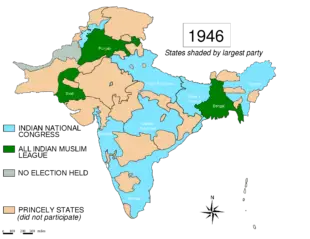Wavell Plan 1945 & Shimla Conference | UPSC – IAS
The Simla Conference 1945 was a meeting between the Viceroy and the major political leaders of British India at Simla, India. Convened to agree on and approve the Wavell Plan for Indian self-government, and there it reached a potential agreement for the self-rule of India that provided separate representation for Muslims and reduced majority powers for both communities in their majority regions.
- The idea was to reconstruct the governor general’s executive council pending the preparation of a new constitution. For this purpose, a conference was convened by the viceroy, Lord Wavell, at Shimla in June 1945.
The Main Proposals of the Wavell Plan were as follows:-
- The Viceroy’s Executive Council would be immediately reconstituted and the number of its members would be increased.
- In the Council there would be equal representation of high-caste Hindus and Muslims.
- All the members of the Council, except the Viceroy and the Commander-in-Chief, would be Indians.
- An Indian would be appointed as the member for Foreign Affairs in the Council. However, a British commissioner would be responsible for trade matters.
- The defence of India would remain in British hands until power was ultimately transferred to Indians.
- The Viceroy would convene a meeting of Indian politicians including the leaders of Congress and the Muslim League at which they would nominate members of the new Council.
- If this plan were to be approved for the central government, then similar councils of local political leaders would be formed in all the provinces.
- None of the changes suggested would in any way prejudice or prejudge the essential form of the future permanent Constitution of India.
- With the exception of the governor-general and the commander-in-chief, all members of the executive council were to be Indians.
- Caste – Hindus and Muslims were to have equal representation
- The reconstructed council was to function as an interim government within the framework of the 1935 Act (i.e. not responsible to the Central Assembly).
To discuss these proposals with Indian leaders, Wavell summoned them to a conference to take place in Shimla on 25 June 1945.

Why the Government was Keen on a Solution Now?
Because of the following reasons:-
- The general election in England was scheduled for mid-1945. The Conservatives wanted to be seen as sincere on reaching a solution.
- There was pressure from the Allies to seek further Indian cooperation in the war.
- The Government wanted to divert Indian energies into channels more profitable for the British.
Failure of the Simla Conference | UPSC – IAS
Meanwhile, a general election had been held in the United Kingdom in July 1945 which had brought the Labour Party to power. The Labour party wanted to transfer power to the Indians as quickly as possible. The new government sent the Cabinet Mission to India and this proved to be the final nail in the coffin of the Wavell Plan.
Wavell’s Mistake and Criticism of Wavell Plan | UPSC – IAS
Wavell announced a breakdown of talks thus giving the League a virtual veto. This strengthened the League’s position, as was evident from the elections in 1945-46, and boosted Jinnah’s position;
The Wavell Plan, in essence, proposed the complete Indianisation of the Executive Council, but instead of asking all the parties to nominate members to the Executive Council from all the communities, seats were reserved for members on the basis of religion and caste, with the caste Hindus and Muslims being represented on it on the basis of parity. Even Mahatma Gandhi resented the use of the words “caste Hindus”.
While the plan proposed immediate changes to the composition of the Executive Council it did not contain any guarantee of Indian independence, nor did it contain any mention of a future constituent assembly or any proposals for the division of power between the various parties of India.


